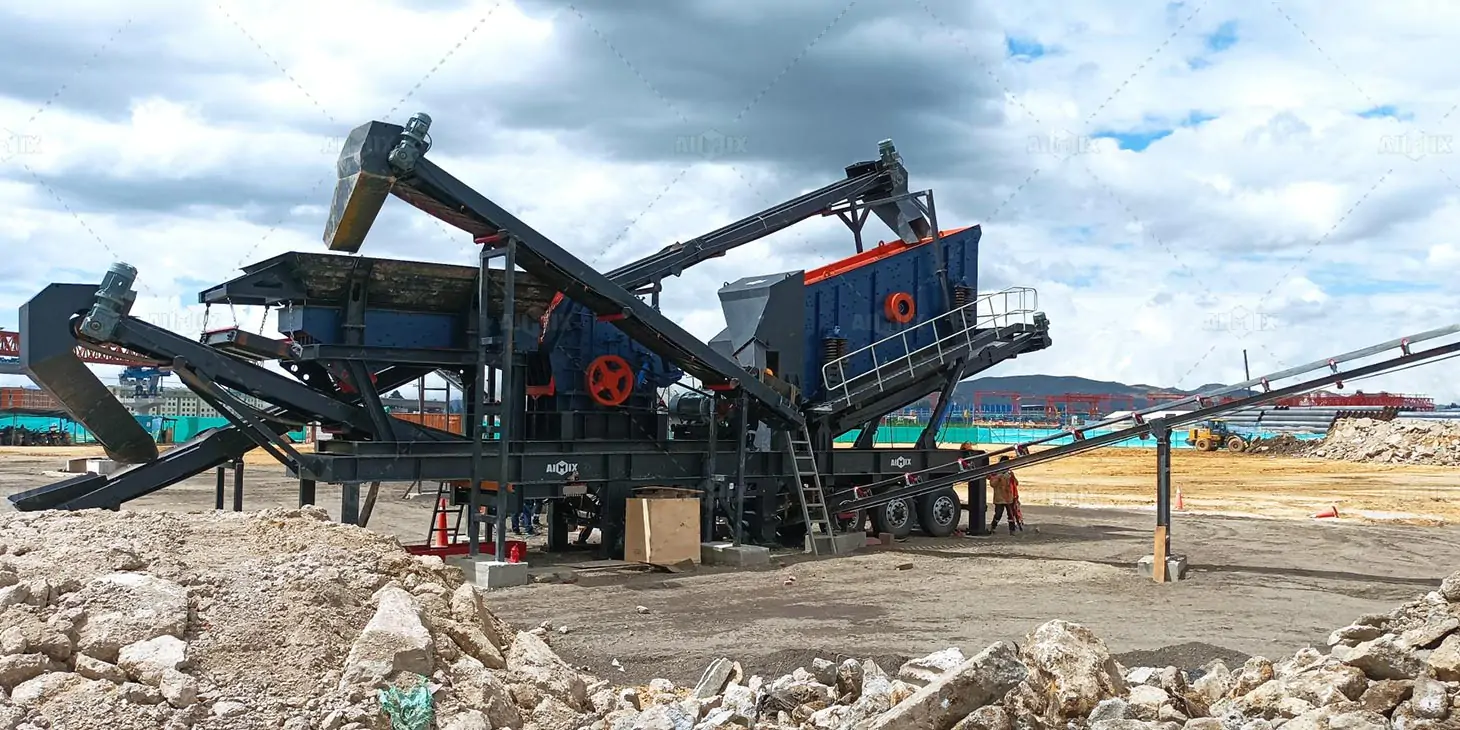How To Make Sand From Construction Waste? Can It Be Used? How Much Does A Construction Concrete Waste Recycling into Sand Machine Cost?
 AIMIX Group
AIMIX GroupThe construction industry generates staggering amounts of waste, with concrete debris accounting for nearly 40% of total construction demolition waste globally. Rather than letting these materials languish in landfills, innovative recycling technologies now allow contractors to transform rubble into high-quality sand substitutes. This circular approach not only addresses environmental concerns but also creates economic value from what was previously considered worthless material.
The process of converting construction waste into functional sand involves several technical steps, each requiring specific equipment and expertise. When executed properly, the resulting material can meet or even exceed the performance characteristics of natural sand in many applications. The viability of this practice depends on understanding the transformation process, potential applications for recycled sand, and the investment required to establish a recycling operation.

The Science Behind Waste-to-Sand Conversion
Modern concrete recycling begins with careful sorting and crushing of demolition waste. Advanced jaw crushers and impact mills reduce chunks of concrete and masonry to manageable sizes, while sophisticated screening systems separate undesirable materials like wood, metal, and plastics. The crushing process typically occurs in multiple stages, gradually reducing particle size while preserving the aggregate's structural integrity.
Water treatment systems play a crucial role in dust suppression and material cleaning, particularly when processing older concrete that may contain contaminants. Some high-end recycling plants employ air classification technology to further refine particle size distribution, creating sand products with consistent grading curves. The final product often requires minimal processing to achieve properties comparable to natural sand, though mix designs may need adjustment to account for the recycled material's slightly higher water absorption.
Practical Applications for Recycled Construction Sand
The resulting material finds numerous applications across the construction spectrum. In non-structural applications like backfill, road base, and pipe bedding, recycled sand performs exceptionally well, often demonstrating better compaction characteristics than virgin materials. Many municipalities now specify recycled aggregates for these uses in public works projects.
For more demanding applications, processed construction waste sand can replace 30-50% of natural sand in new concrete mixes without compromising strength or durability. Some advanced recycling facilities produce material that meets ASTM C33 specifications for concrete aggregates when properly processed. Landscape architects increasingly specify recycled sand for horticultural applications, appreciating its consistent texture and drainage properties.

The environmental benefits extend beyond waste reduction. Each ton of recycled sand replaces a ton of mined material, preserving natural resources and reducing the ecological damage caused by sand extraction. This consideration grows increasingly important as many regions face sand shortages and tightening restrictions on aggregate mining.
Evaluating the Investment in Recycling Equipment
The cost of establishing a construction waste recycling operation varies dramatically based on scale and automation level. Small mobile impact crusher-screen combos suitable for onsite recycling start around $150,000, while high-volume stationary plants with full material cleaning capabilities can exceed $2 million. The sweet spot for most contractors is mid-range equipment in the $400,000-$800,000 range, capable of processing 100-250 tons per hour.
Operating costs typically run $10-$25 per ton processed, factoring in equipment maintenance, labor, and energy consumption. These figures must be weighed against local landfill tipping fees (often $50-$100 per ton in urban areas) and the market value of recycled sand ($15-$40 per ton depending on quality and region). Many operations achieve payback periods of 18-36 months, with profitability improving dramatically when combined with other recycled products like aggregate.
Government incentives can significantly improve the financial picture. Various jurisdictions offer tax credits, grants, or low-interest loans for waste recycling equipment. Some require the use of recycled content in public projects, creating guaranteed markets. Forward-thinking contractors are finding that sand recycling isn't just environmentally responsible—it's becoming a competitive necessity in markets with strict sustainability requirements.
The transition from waste to resource represents one of the construction industry's most promising circular economy opportunities. As technology improves and material science advances, the applications for recycled sand will continue expanding. What begins as demolition debris can become the foundation for new structures, closing the loop in the built environment's material lifecycle.
Subscribe to my newsletter
Read articles from AIMIX Group directly inside your inbox. Subscribe to the newsletter, and don't miss out.
Written by

AIMIX Group
AIMIX Group
AIMIX Group is a leading manufacturer and supplier of construction machinery and equipment, renowned for its innovative solutions and high-quality products in the global market. Official website: https://aimixgroup.com/